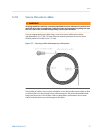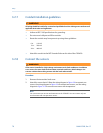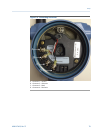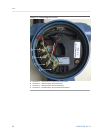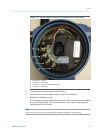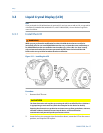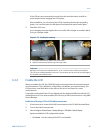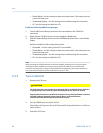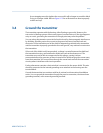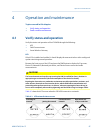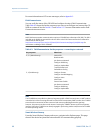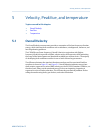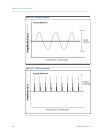
Use a strapping wrench to tighten the cover until it will no longer turn and the black
O-ring is no longer visible. Refer to Figure 3-12 for an illustration on how to properly
seal the end cap.
3.4 Ground the transmitter
The transmitter operates with the housing, either floating or grounded. However, the
extra noise in floating systems affects many types of readout devices. If the signal appears
noisy or erratic, grounding the transmitter at a single point may solve the problem.
You can reduce electrostatic current in the leads induced by electromagnetic interference
by shielding. Shielding carries the current to the ground and away from the leads and
electronics. If the transmitter end of the shield is adequately grounded to the transmitter
and the transmitter is properly grounded to the earth ground, very minimal current enters
the transmitter.
If the ends of the shield are left ungrounded, a voltage is created between the shield and
the transmitter housing, and between the shield and earth at the element end. The
transmitter may not be able to compensate for this voltage, causing it to lose
communication and/or generate an alarm. Instead of the shield carrying the current away
from the transmitter, the current flows through the sensor leads and into the transmitter
circuitry where it interferes with circuit operation.
Each accelerometer contains a drain wire that is connected to the sensor shield. This wire
should be connected to the internal grounding screw attached to the housing near the
terminal block.
Ground the transmitter in accordance with local, national, and international installation
codes. You can ground the transmitter through the process connection, the internal case
grounding terminal, or the external grounding terminal.
Setup
MHM-97408, Rev 15 85



